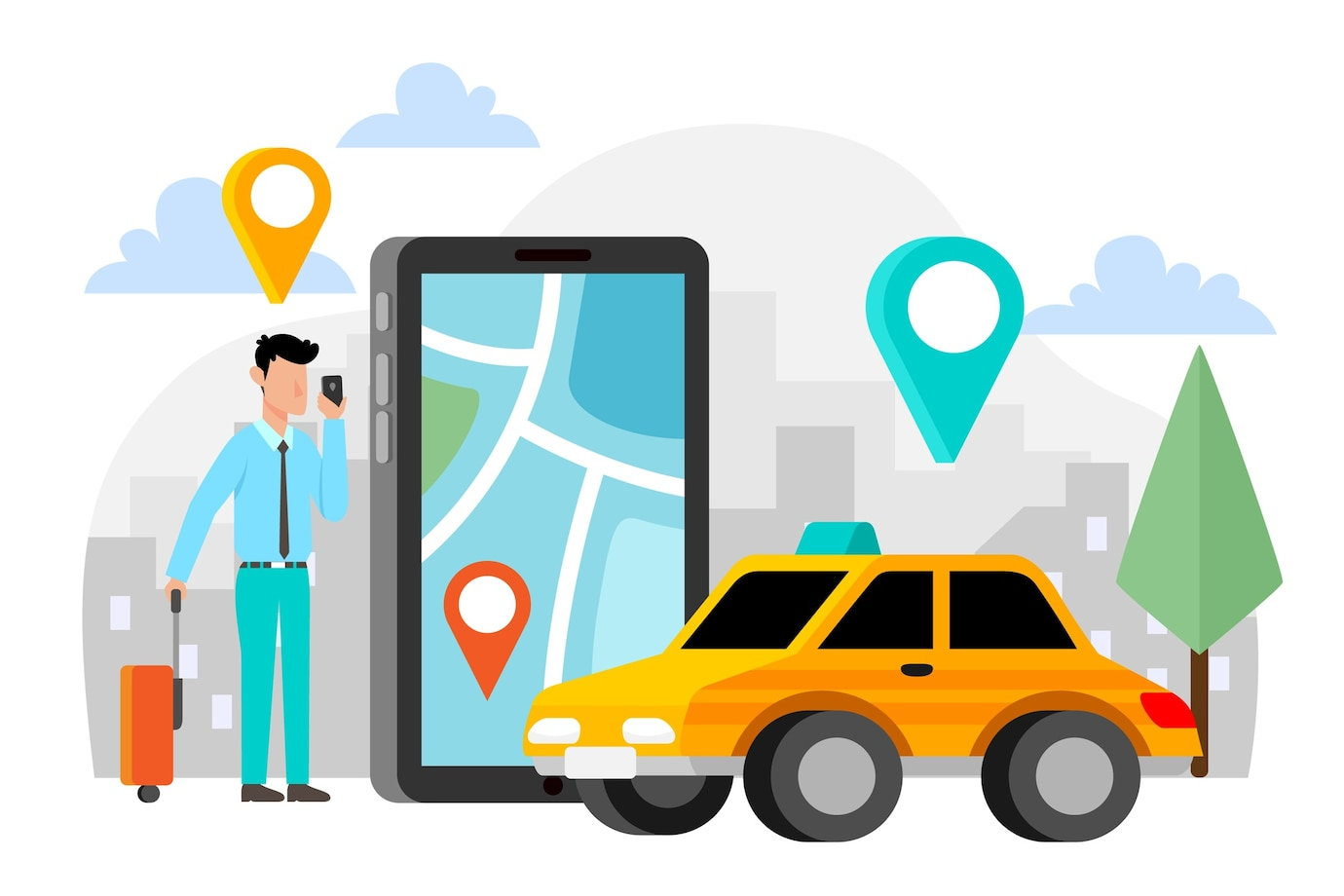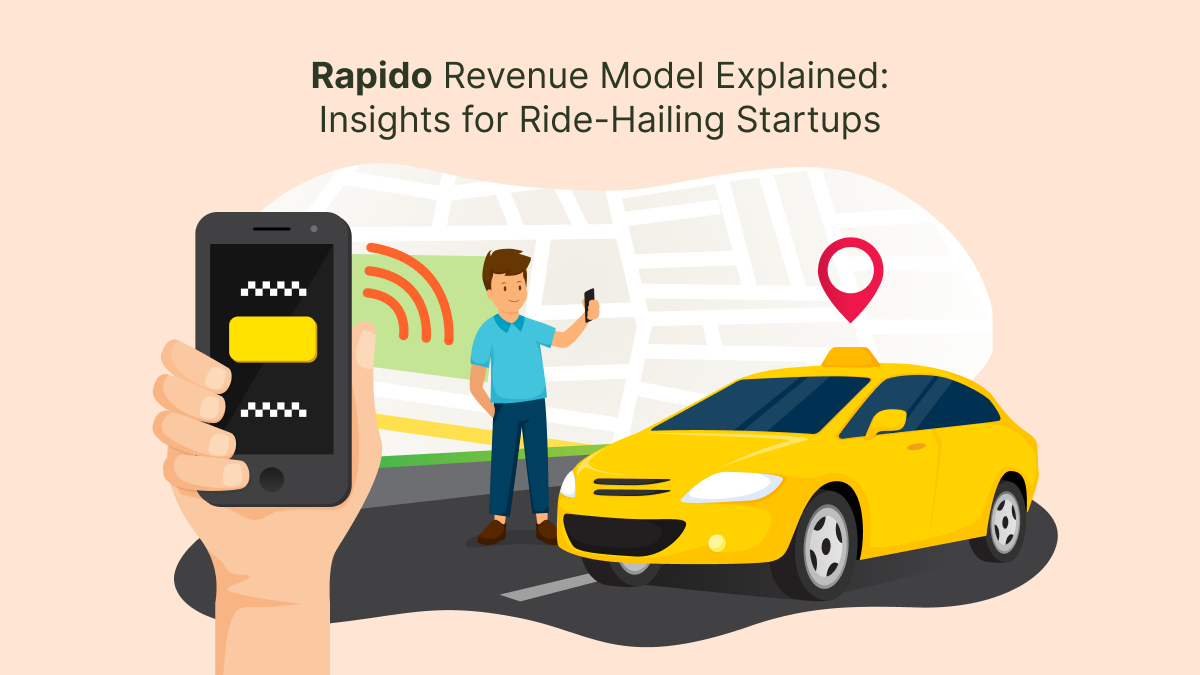In today's fast-paced world, convenience is everything. With cities becoming more crowded, bike taxi services like Rapido have gained huge popularity by providing affordable, quick, and reliable transport options. Rapido has emerged as one of India's leading bike taxi platforms by solving last-mile connectivity issues for millions of commuters. Its unique and well-planned revenue model has played a big part in this success.
This blog will explain the Rapido revenue model in detail, including how it works, its key income sources, and what startups can learn from its approach to building a profitable ride-hailing business.
Understanding the Rapido Business Model
How Does Rapido Work?
Rapido operates on an aggregator-based business model. It acts as a bridge between customers who need affordable rides and bike owners, known as captains, who wish to earn income by offering rides. The platform doesn't own any bikes; instead, it connects riders and captains through its app, ensuring smooth and reliable operations.
Customers simply book a ride using the app, a nearby captain accepts the request, and the ride begins. Payment can be made digitally or in cash, depending on user preference. This simple and efficient process allows Rapido to operate in multiple cities without large infrastructure costs.
Key Players in Rapido's Ecosystem
The Rapido platform functions through three main participants:
- Riders who use the app to book quick and affordable rides
- Captains who provide the service using their own bikes
- The platform (Rapido), which facilitates smooth bookings, payments, and customer support
By maintaining a balance between these participants, Rapido ensures that everyone benefits. Riders get convenience, captains earn flexible income, and the platform generates consistent revenue.
Rapido Revenue Model Explained
Commission from Captains
The Rapido revenue model mainly relies on commissions. The company charges captains a specific percentage on each completed ride. For example, if a captain earns ₹100 from a ride, Rapido keeps a small portion as its service fee. This commission-based system allows the company to earn continuously as the number of rides increases.
Since Rapido doesn't own any bikes, this model minimizes operational expenses. The company doesn't need to spend on vehicle maintenance, fuel, or driver management, making it a scalable and profitable business approach.
Surge Pricing
Another major part of the Rapido revenue model is surge pricing. During high-demand periods such as peak office hours or bad weather, Rapido increases ride fares slightly. This not only encourages more captains to accept rides but also helps the company earn additional revenue from increased fares. Surge pricing ensures a balance between demand and supply while maximizing profitability.
Subscription Plans for Captains
Rapido also offers subscription-based plans for captains. These plans include benefits such as reduced commission rates, better ride matching, and priority support. Captains pay a small recurring fee to access these advantages, creating another steady revenue source for Rapido.
Advertising and Brand Partnerships
In addition to ride commissions, the Rapido revenue model includes income from in-app advertising and brand collaborations. Brands use Rapido's platform to display promotions or run local advertising campaigns. The company also partners with popular brands for cross-promotional deals, such as offering ride discounts or vouchers, which benefit all parties involved.
Read More: Rapido Revenue Model: How the Bike Taxi Startup Generates Profits
Corporate Tie-ups and Delivery Services
Rapido has expanded its business beyond personal rides by partnering with companies for employee transportation and delivery services. Many businesses use Rapido's fleet for quick and affordable deliveries, helping the company diversify its revenue. These collaborations add stability to Rapido's earnings while strengthening its brand presence in the logistics sector.
Factors Behind Rapido's Success
Targeting Everyday Commuters
Rapido's main audience includes students, office workers, and middle-class commuters who need affordable travel options. By offering bike rides at lower prices than traditional taxis or cabs, Rapido quickly captured a large market share in urban areas.
Solving Last-Mile Connectivity
One of the biggest challenges in Indian cities is reaching destinations from metro stations or bus stops. Rapido resolved this issue effectively by focusing on short-distance rides. This smart strategy not only increased daily usage but also created a loyal customer base.
Technology-Driven Approach
Rapido uses advanced technology for ride-matching, GPS tracking, and digital payments. The app's real-time tracking and user-friendly interface have helped it earn customer trust. Data analytics also play a key role in identifying high-demand areas, ensuring optimized fleet distribution.
Cost-Efficient Operations
Since Rapido follows an asset-light model, it doesn't own vehicles or have heavy operational costs. Most of its income comes from commissions and partnerships, making the Rapido revenue model highly efficient and sustainable for the long term.
Brand Reliability and Safety
Rapido has built trust through strict safety measures and identity verification for captains. It ensures helmets for riders, background checks for captains, and responsive customer support. These practices help maintain user confidence and long-term growth.
What Startups Can Learn from the Rapido Revenue Model
Focus on Affordability
Startups in the ride-hailing industry should aim to make transportation affordable and accessible. Rapido's pricing strategy is one of its biggest advantages, helping it reach mass users in smaller cities.
Build an Asset-Light Model
Owning vehicles increases cost and limits scalability. The Rapido revenue model proves that connecting existing vehicle owners through an app can achieve large-scale success without heavy investment.
Expand Revenue Streams
Depending only on ride commissions may limit growth. Startups should diversify income through advertising, corporate partnerships, and subscription plans, just like Rapido.
Strengthen Customer Retention
Providing incentives, referral bonuses, and quality support can help startups retain both riders and captains. Customer loyalty plays a key role in achieving long-term success.
Leverage Technology
Technology is the backbone of every on-demand business. From real-time tracking to digital payments, implementing smart solutions improves efficiency and user experience.
Challenges in the Rapido Revenue Model
Regulatory Hurdles
Many states in India initially restricted bike taxis due to safety and licensing concerns. Rapido had to navigate these legal barriers, which slowed its expansion in some areas.
Competition from Other Platforms
The company faces strong competition from ride-hailing giants like Ola and Uber, which have introduced similar bike services. To stay ahead, Rapido continuously updates its technology and service quality.

Rider and Captain Retention
Maintaining a balance between rider demand and captain availability is crucial. Incentives and better commission structures are necessary to keep both groups satisfied.
Future of Rapido's Business Model
Rapido's focus on two-wheelers and affordability gives it a unique edge in the growing ride-hailing industry. The company is also exploring electric bikes to reduce operational costs and promote sustainability. With India's growing urban population and increasing smartphone usage, Rapido's business model is expected to expand further across cities.
The future of the Rapido revenue model lies in continuous innovation, technology integration, and diversified services such as delivery and corporate partnerships.
Conclusion
Rapido's success shows how a smart and flexible business model can transform the transportation industry. By connecting everyday commuters with local bike owners, Rapido has built a profitable and scalable business without owning any vehicles. Its commission-based approach, coupled with diversified revenue streams, ensures long-term sustainability. Startups looking to enter the ride-hailing market can learn valuable lessons from the Rapido revenue model and apply them to build their own successful platforms. For entrepreneurs planning to create a similar all-in-one on-demand service, exploring a gojek clone app can be a strategic way to enter the market efficiently.
FAQs
How does the Rapido revenue model work?
The Rapido revenue model operates on a commission-based system where the company earns a small percentage from each ride completed by its captains. It also generates income from advertising, partnerships, and corporate tie-ups.
What makes Rapido different from other ride-hailing apps?
Rapido focuses on two-wheeler rides, making it faster, more affordable, and suitable for short-distance travel. Its approach to solving last-mile connectivity issues helps it stand out in the market.
How does Rapido attract and retain captains?
Rapido offers flexible working hours, competitive earnings, and subscription plans that reduce commission rates. These features help attract new captains and retain existing ones.
Is the Rapido business model profitable?
Yes, Rapido's asset-light model helps reduce operating costs while ensuring steady income from multiple revenue streams. This makes the business both profitable and scalable.
Can startups replicate the Rapido revenue model?
Absolutely. Startups can build similar platforms by adopting an aggregator-based model, focusing on affordability, and implementing strong technology systems for seamless operations.


